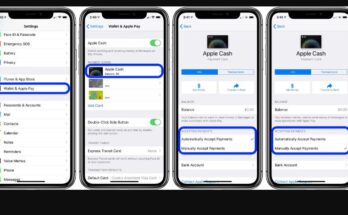Have you ever felt overwhelmed by the myriad of features in your app’s dashboard?
Understanding the core app dashboard is essential for maximizing your app’s potential and ensuring a smooth user experience.
This guide will walk you through everything you need about the core app dashboard, making it simple and accessible for everyone.
Introduction to Core App Dashboard
The core app dashboard is the command centre of any application, providing an overview of all essential features and data. But what exactly makes it so crucial?
Imagine the dashboard as the cockpit of an aeroplane, giving you control and insights to navigate smoothly and efficiently. It’s designed to be user-friendly, ensuring you can manage your app without getting lost in technical jargon.
Key Features of the Core App Dashboard
What sets the core app dashboard apart from other interfaces? The key features include real-time data updates, customizable widgets, and intuitive navigation. These elements work together to provide a seamless experience, like how the gears in a clock work harmoniously to keep time.
Real-Time Data Updates
One of the standout features is the real-time data updates. This means you can see changes as they happen, helping you make informed decisions quickly. It’s like having a live feed of everything necessary happening within your app.
Customizable Widgets
Widgets are the building blocks of your dashboard. They can be tailored to show the information most relevant to you. Think of them as pieces of a puzzle you can arrange to create the perfect picture of your app’s performance.
Intuitive Navigation
Navigating the dashboard is designed to be straightforward, even for beginners. It’s akin to having a well-marked trail in a dense forest – you always know where you are and where you need to go next.
How to Navigate the Dashboard
Navigating the core app dashboard is easier than you might think. Start with the main menu, which typically includes tabs or icons for different sections. Clicking on these will take you to various parts of the dashboard, each designed to focus on a specific aspect of your app.
Main Menu Overview
The main menu is your gateway to the dashboard. It usually includes sections like Home, Analytics, Settings, and Support. Each section provides a different set of tools and data.
Sub-Menus and Tabs
Within each main section, you’ll find sub-menus or tabs that allow you to dive deeper. For example, you might discover tabs for User Statistics, Revenue Reports, and Engagement Metrics under Analytics under Analytics.
Customizing Your Dashboard
Personalizing your dashboard can significantly enhance your user experience. Customization options allow you to highlight the data and tools you use most frequently, making your dashboard a true reflection of your needs.
Adding and Removing Widgets
To customize your dashboard, start by adding or removing widgets. Most dashboards have an “Edit” or “Customize” button that lets you drag and drop widgets into place. Removing widgets you don’t need helps declutter your workspace.
Setting Preferences
You can also set preferences for how data is displayed. This might include choosing between graphs and tables, setting date ranges, or selecting specific metrics to focus on.
Dashboard Widgets and Their Functions
Widgets are small, self-contained elements that display specific pieces of information. Understanding their functions will help you make the most of your dashboard.
Types of Widgets
Common types of widgets include:
- Charts and Graphs: Visualize data trends over time.
- Counters: Display critical metrics like user count or sales figures.
- Tables: Provide detailed data in a structured format.
How to Use Widgets Effectively
To use widgets effectively, position the most important ones where you can see them at a glance. Regularly review and update them to ensure they display relevant information.
Analyzing Data with the Dashboard
One of the primary purposes of the core app dashboard is data analysis. The dashboard aggregates and presents data in a way that is easy to understand, helping you draw insights and make decisions.
Identifying Trends
Use charts and graphs to identify trends in your data. For example, a line graph showing user engagement over time can help you spot peaks and troughs, indicating when users are most active.
Comparing Metrics
Comparative analysis is another powerful feature. You can see how changes in one area affect another by comparing different metrics. For instance, comparing marketing spend with user acquisition rates can reveal the effectiveness of your campaigns.
Common Issues and Troubleshooting
Even the best dashboards can sometimes encounter issues. Knowing how to troubleshoot common problems can save you time and frustration.
Connectivity Issues
If your dashboard isn’t loading or updating, check your internet connection. A stable connection is crucial for real-time data updates.
Data Discrepancies
Sometimes, the data displayed might not match your expectations. This could be due to incorrect settings or delays in data synchronization. Double-check your settings and refresh the dashboard.
Best Practices for Using the Dashboard
Follow these best practices to get the most out of your core app dashboard.
Regular Updates
Ensure that your data is up-to-date by regularly refreshing the dashboard. This helps you make decisions based on the latest information.
Focus on Key Metrics
Avoid information overload by focusing on key metrics that matter most to your goals. This keeps your dashboard clean and manageable.
Real-Life Examples of Effective Dashboard Use
Seeing how others use their dashboards can provide inspiration and practical tips.
Case Study: E-Commerce Business
An e-commerce business uses its dashboard to track sales, monitor inventory, and analyze customer behaviour. By customizing their widgets, they could see real-time sales data alongside stock levels, helping them make quick restocking decisions.
Case Study: Marketing Campaign
A marketing team used their dashboard to track the performance of their campaigns. By comparing ad spending with engagement metrics, they optimized their strategies to improve ROI.
The Future of Core App Dashboards
The future of core app dashboards looks promising with advancements in technology.
AI and Machine Learning
AI and machine learning are set to revolutionize dashboards by providing predictive analytics and automated insights. Imagine a dashboard that not only shows you current data but also predicts future trends.
Enhanced Customization
Future dashboards will offer even more customization options, allowing users to tailor every interface aspect to their specific needs.
FAQs about the Core App Dashboard
1. What is a core app dashboard?
A core app dashboard is a centralized interface that provides an overview of an app’s key features and data, helping users manage and analyze their app effectively.
2. How can I customize my dashboard?
Most dashboards offer customization options such as adding or removing widgets, setting display preferences, and arranging elements to suit your needs.
3. What are widgets?
Widgets are small, self-contained elements that display specific pieces of information, such as charts, counters, or tables.
4. How do I troubleshoot dashboard issues?
Common troubleshooting steps include checking your internet connection, refreshing the dashboard, and ensuring your settings are correct.
5. What is the future of app dashboards?
The future of app dashboards includes AI and machine learning advancements, which will provide predictive analytics and more personalized customization options.




